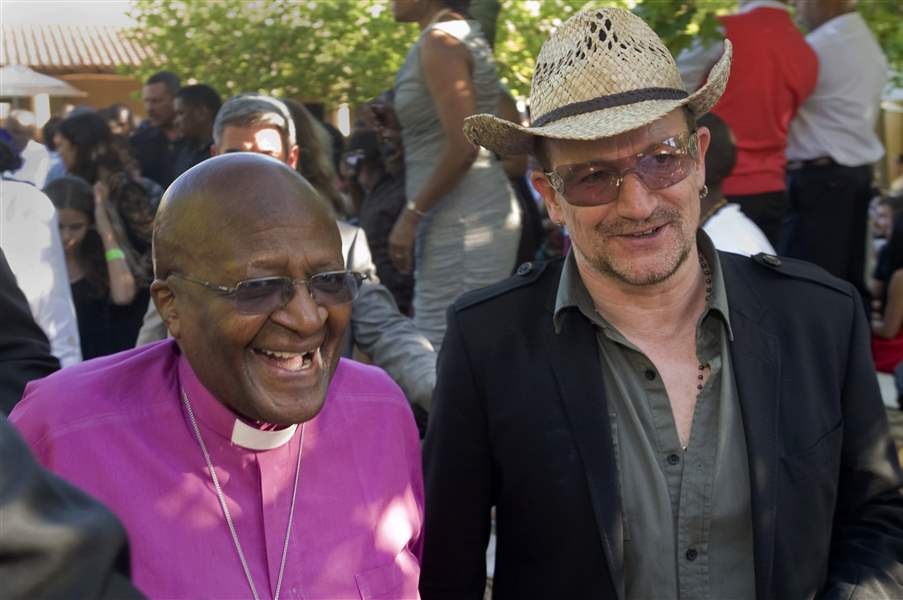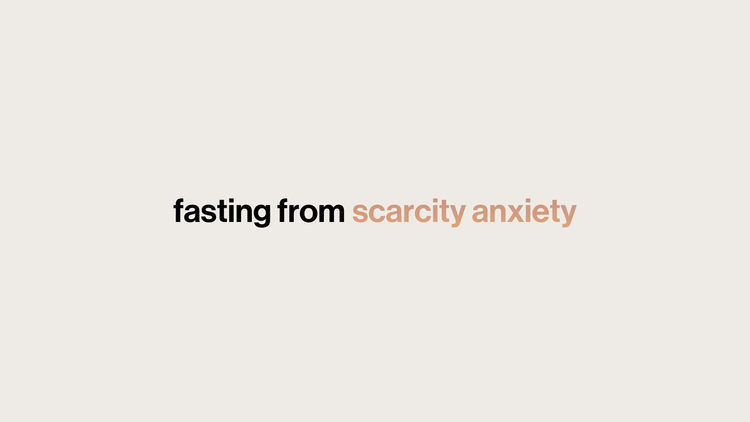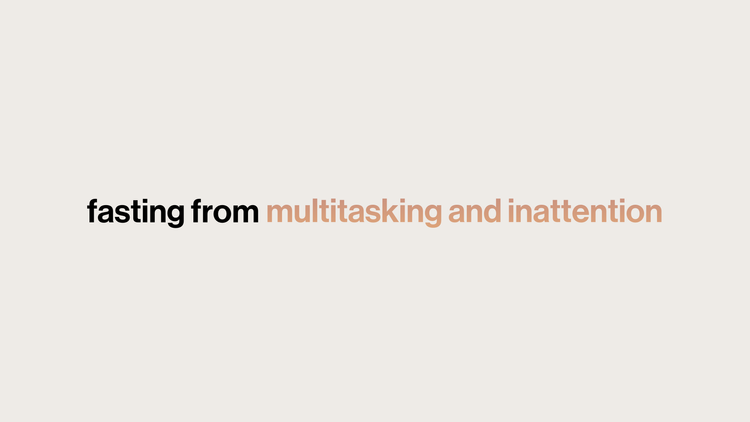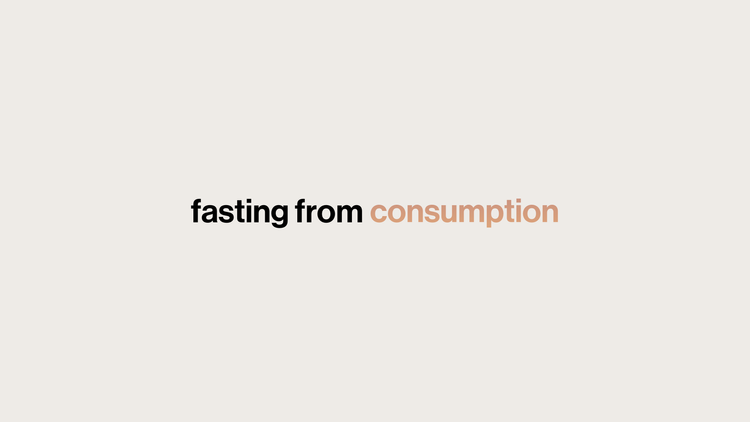On Ascension, The Runaway Bunny, and Thoughts & Prayers

Sermon Delivered at The Local Church
Sunday, May 29, 2022 • Ascension C
Scripture: Acts 1:1–11
Monday was the birthday of children’s author Margaret Wise Brown, famous for writing Goodnight Moon as well as the book I read just a few minutes ago, The Runaway Bunny — a book I’ve seen described as “one of the best implicitly theological stories of the twentieth century.” The Runaway Bunny was published in 1942, and in the 80 years since, has never once been out of print. That’s a pretty good run.

I thought it was important to read today for a few reasons. If nothing else, especially this week, I want our Local Kids (and kids at heart) to know how much they are loved. I don’t want them or you to forget that. At its core, it’s why we gather here each week, really, and do what we do with the songs we sing and the prayers we pray and the scripture we hear, and the grace we receive at Communion — to be reminded of the affirming, anchoring, and empowering truth that there’s nowhere we can go where God’s love is not. It’s behind us and before us. It hems us in. Just like the mother bunny is always present for her own little bunny — as a fisherman or a mountain climber or a tree to come home to — in the same way, we proclaim each week that nothing can separate us from God’s love in Christ Jesus.
And we know that this is true because of today, actually: Ascension Sunday. The Runaway Bunny is the perfect book to teach us about the ascension of Jesus.
Today is Ascension Sunday, the final Sunday of the season of Eastertide, a season that lasts for seven weeks, fifty days in total — one week longer than Lent, and that’s no coincidence. And today, Ascension Sunday, marks the ascension of Jesus to heaven, taking his place at the right hand of the Father, an event that happened forty days following the resurrection.
You can find the story of the Ascension at the very end of Luke’s gospel. It’s a shortened account there, with Jesus blessing his disciples as he’s lifted up out of sight.
But the beginning of the Acts of the Apostles, which is essentially Luke’s sequel to his gospel, gives us the expanded director’s cut. For forty days after the resurrection, Jesus presents himself alive. He hangs out with his closest friends and followers. He shares meals. He shares life. He prays with them and offers forgiveness. He meets them in their travels and opens their eyes as they break bread together. He talks with them about the kingdom of God, and about how that kingdom — that dream of God — is now becoming a reality. How God’s promised day is coming true.
When those forty days are up, Jesus tells them not to leave but to wait for the promise of the Father, and what he’s hinting at here is Pentecost which will come ten days later when the Holy Spirit descends and there’s wind and fire, and the disciples are empowered and enlivened to carry the very presence of Jesus into the world. It’s the birth of the church, and we’ll celebrate that together next Sunday.
After Jesus says all this, the disciples start to ask Jesus some burning questions. Questions we might have had, too, had we been there. Had we been traveling with him those few years. Had we been witness to the oppression and consequent liberation made possible by resurrection. They asked him, “Lord is this the time you’re going to restore the kingdom to Israel?” In other words, “How about now? Is now when we take back our land? Is now when Israel is restored to greatness? Is now when our people get our power back at last and we get to call the shots?”
But Jesus’ response is classic Jesus — not giving a direct answer and not giving a timeline but instead saying, “You will receive power when the Holy Spirit has come upon you, and you will be my witnesses in Jerusalem, in all Judea and Samaria, and to the ends of the earth.”
In other words, the power you think you want is not the power that I’m going to give you. It’s not the power you need. Just wait and see.
And with these words, Jesus is lifted up by a cloud and taken out of sight. He vanishes before their very eyes. This is the Ascension — the moment Jesus ascends to heaven. This is the moment Jesus takes his place at the right hand of God.
It’s important to remember that when Jesus talks about the kingdom of God or the kingdom of heaven, he’s not merely describing a place “up there.” And this is hard for us to get our minds around because of how our imaginations and belief systems have been malformed to think about heaven and hell. But to Jesus, heaven is not as much a geographical place as it is a reality — a state of which our minds can’t fully grasp, one that exists both in the now and the not yet, as Leah touched on last week.
So all this is to say that when we think about the ascension of Jesus to heaven, we shouldn’t just think about Jesus going up, up, and away to watch over us from 100,000 feet up. When we think about Jesus’ ascension, what’s happening here — and why this is so important — is that Jesus’ ascension to heaven is actually about Jesus moving from inhabiting one particular geographical place in one particular moment in time to inhabiting the whole world always and everywhere. Let me say that again: In the ascension, Jesus moves from inhabiting one particular geographical place in one particular moment in time to inhabiting every time and every place. In this moment, he moves beyond physical linear time and geographic place. That’s why the Ascension is a big deal. Jesus’ ascension makes possible the cosmic breadth and timelessness of Jesus’ presence and promise with us and all of creation. This is how Jesus reigns across time and space...
… and it’s how we know that nothing can separate us from God’s love. That there’s nowhere we can go where Jesus is not. Sort of like how the mother bunny could inhabit all of the places her little bunny was, too.
Jesus’ ascension leaves the disciples stunned — with eyes staring upward and likely mouths on the ground, trying to make sense of what has just happened. And that’s when two men in white robes appear standing nearby and ask, “Men of Galilee, why do you stand looking up toward heaven? This Jesus, who has been taken up from you into heaven, will come in the same way as you saw him go into heaven.” In other words, “Hey, quit starting up with your mouths agape. Get a move on. There’s work to do.” More on that in a minute
But first, I want to pause and imagine this moment before the men in white robes ask their incredible question. Because I get it. I’d probably do the same thing. Jesus is there one minute and gone the next, and the disciples here are left trying to make sense not just of the last few minutes but the last forty days and then some. Can you imagine it? Consider the reopened wounds here. The insult to injury. They’d already watched him leave once before — crucified and buried. But then, miraculously, somehow Jesus returned alive. They saw the proof with their own eyes and, miraculously, somehow their lives returned to some semblance of normalcy, their attention back on restoring Israel to greatness, but now here they are again. In stunned silence. Their worst fears coming true — yet again.
And sometimes all you know to do is look up — with your questions, with your disbelief, with your confusion, with your stunned silence. It’s what I felt on Tuesday afternoon as I learned about the shooting at Robb Elementary.
That’s what I did. That’s all I could do. I was in a meeting with someone from The Local Church, and we were wrapping up just as the alert came through, and, I’ll admit, when I saw the news and it started to sink in, my first word was an expletive. I swore in horror and incredulity. And because I couldn’t believe that not two weeks out from a mass shooting in Buffalo, here we were again. And then I looked up from my computer screen where the New York Times website was providing a steady stream of heart-wrenching updates, and I said to the person I was with, “Hey, can we pray?”
She said, “Of course.” And so we bowed our heads in that moment, and I started, “Holy God… I just don’t know.”
Much like the disoriented disciples whose world had been rocked again and again, all I could do was sit there in my own stunned silence.
In the days since, I’ve seen tweets and images and posts — and maybe you have to — that say something to the effect of, “We’re done with thoughts and prayers. Thoughts and prayers don’t work. Enough with your thoughts and prayers.”
I get it. For too long, politicians and others in power have used “thoughts and prayers” as a way to deflect responsibility. To keep real solutions at a distance. They’ve used prayer as a moral cover. It’s been a way of feigning outrage amidst gross inaction as more and more people, and especially kids, die due to gun violence which was, by the way, the leading cause of death among kids aged 1 and older in 2020. And this year, there have been more mass shootings than days in the year. And so when people say, “Spare me your thoughts and prayers,” I get it. I feel that, too.
It’s what the prophet Amos was getting at when, speaking on behalf of God, Amos says,
“I hate, I despise your festivals, and I take no delight in your solemn assemblies. Even though you offer me your burnt offerings and grain offerings, I will not accept them…” (Amos 5:21–22a)
It’s because those prayers, those offerings, were merely for show. There wasn’t anything behind them, and they didn’t lead anywhere. It was merely an insincere, inauthentic, pious gesture — similar to many of the “thoughts and prayers” tweets that come like clockwork following a mass shooting.
But I also think that as the church, we have the opportunity to offer a corrective here and name that prayer does have a function for us in these moments. On Tuesday afternoon, when I was stuck in my stunned silence, there was this beautiful moment when the person I was with broke the silence and picked up where I left off — offering a beautiful prayer that named the heartache, that named the horror, that prayed for mercy for the victims and their families, and begged God to do something, begged God to use us to become an answer to this very prayer.
Sometimes, it’s easy to fall into the trap of thinking that prayers don’t work — that they are merely empty platitudes and that it would be better to get a move on and actually do something. But what I think is important to name is that we move with greater purpose and greater efficacy if we have first prayed,
if we’ve first taken time to ask God, “Where do you need me to be?”
if we’ve held the names of the dead in our hearts, asked God to have mercy on them and on their families, and let that heartache, that compassion (which literally means to “suffer with”) stir us and motivate us toward our next steps
if we’ve given our anger and frustration and lament to God (who can take it)so that we are able to freely move forward into action with greater clarity and vision and resolve because we have first prayed.

It reminds me of the exchange Bono, U2’s lead singer, described with Archbishop Desmond Tutu in the throes of apartheid. Bono asked if it was hard to find time for prayer amidst all the important work he was doing to dismantle white supremacy and end the violent oppression there in South Africa. Archbishop Tutu quickly fired back, “How do you think we could do any of this work without prayer and meditation?”
What he’s getting at is this: We’ve got to look up before we can move out. Prayer gives us our center.
Which brings us back to the question asked by the two men in white robes: “Men of Galilee, why do you stand looking up toward heaven?”
These two men in white robes are meant to remind us of another story Luke tells. We heard it just a few weeks ago on Easter Sunday, and that story like this story also features two men in dazzling clothes. It’s those men who greet the women inside the tomb on the morning of the resurrection and break the news that Jesus isn’t there, imploring them then to remember his words to them.
It feels like a lifetime since Easter Sunday, doesn’t it? So much life has happened. For the disciples. For us. And on this last Sunday of Eastertide, Easter Sunday and its promise of hope might feel like a distant memory.
Not only do we each have our own heaviness that we carry, but the war in Ukraine drags on.
There’s another COVID surge that just feels relentless.
A racist hate crime in Buffalo left 10 dead.
An unspeakable act of violence and evil in Uvalde leaves 22 of God’s beloved — most of them elementary school children — dead.
Easter might seem like a distant memory — which is why we need these men to ask us this very question. To awaken us from our slumber. From the ways we’ve grown numb to tragedy. And to move us from thoughts and prayers with inaction to embodied, active prayer with our hands, feet, heart, and voice. To work for change. To hold our elected leaders to account. To stand in solidarity with the kids who didn’t come home and their parents who’ll never get to hold their baby again. And so that we might walk in the way of Jesus and be witnesses of love and liberation and restoration and community and healing and peace in Pittsboro and Chapel Hill and Siler City and Durham and Apex and to the ends of the earth — trusting along the way that, like Mama Bunny, there’s nowhere we can go where God isn’t and clinging to the promise of a day and working toward the promise of that day when swords are beaten into plowshares and there’s no more mourning or crying or pain — every tear is wiped away from every mother’s eye who’s ever had to bury her child — and all things are made new.
So look up and pray. But don’t stop there. Because we’re moving out soon.




